AirGradient Open Source Air Quality Monitors
We design professional, accurate and long-lasting air quality monitors that are open-source and open-hardware so that you have full control on how you want to use the monitor.
Learn MoreYesterday I visited a slum in Lagos, Nigeria. The whole place was flooded—water up to my knees, just a fact of life when you’re this close to the sea. But what got me wasn’t the flooding. It was the kids.
Most children I saw had a running nose. Their eyes were red and irritated. This was not caused by seasonal allergies or a passing flu. This is the daily reality for dozens of children under five, living in a cloud of smoke so thick I could hardly see the makeshift homes around them.
The smoke comes from survival. The women in this community smoke fish - it’s their livelihood, their way of feeding their families. The men go out to sea to fish, and the women preserve the catch by smoking it for sale in Lagos markets. But the traditional method meant dozens of individual smoking operations scattered throughout the community, each one belching thick smoke into the air with nowhere to go.
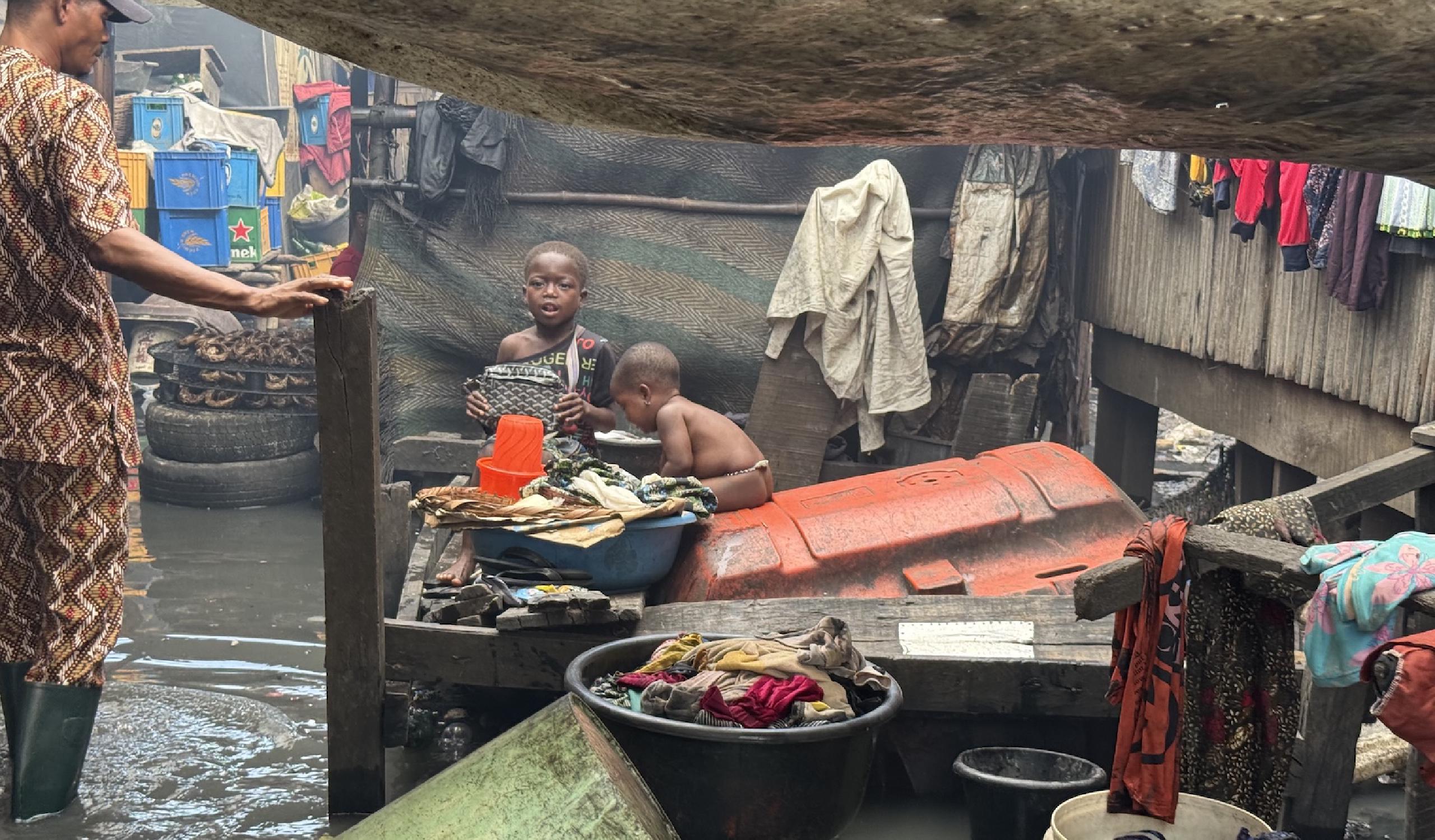
Moses, the son of the community’s late founder and Okwong John Walter, a researcher from the University of Lagos walked me through the settlement.
About a year ago, Okwong came to the community with an AirGradient monitor that we donated. What he found was staggering: PM2.5 levels of around 250 μg/m³ - fifty times the WHO’s annual safe limit. The color code on the monitor showed red to purple, indicating hazardous air quality.
“For us to be able to inform governments, we need data,” Okwong explained. “And luckily we got the data from AirGradient, which we used in piloting the study.”
This is where the story takes a turn. Because that data - those numbers displayed on a simple air quality monitor - became the evidence needed to convince the Lagos Environmental Protection Agency to take action.
Through the partnership between the University of Lagos and the Lagos Environmental Protection Agency, three proper fish smoking incinerators have been installed in the community. Instead of isolated, uncontrolled smoking operations creating smoke clouds throughout the settlement, the community can now take turns using properly designed kiln that are expected to reduce air pollution by 70%.
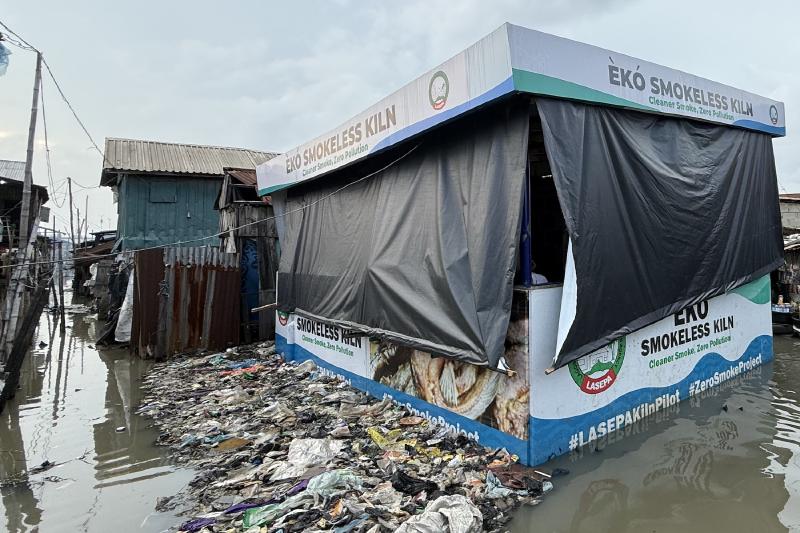
Think about that for a moment. One air quality monitor. One year of data. A 70% reduction in pollution.
But let me come back to those children with running noses, because that’s what haunted me most and made me get up early today to write this article. Standing there in the flooded community, inhaling the constant smell and pollution and watching kids play in polluted water breathing toxic smoke 24/7, seeing their red eyes and constant sniffles really struck me. We were there only for an hour or so and I could already feel how the pollution affected me.
But air pollution is only one of the many problems this community faces. It still lacks portable water. The drainage is clogged. There are no schools, no hospitals. As Moses put it, “We are doing it in phases. When we have more funding, we’ll go to the next phase.”
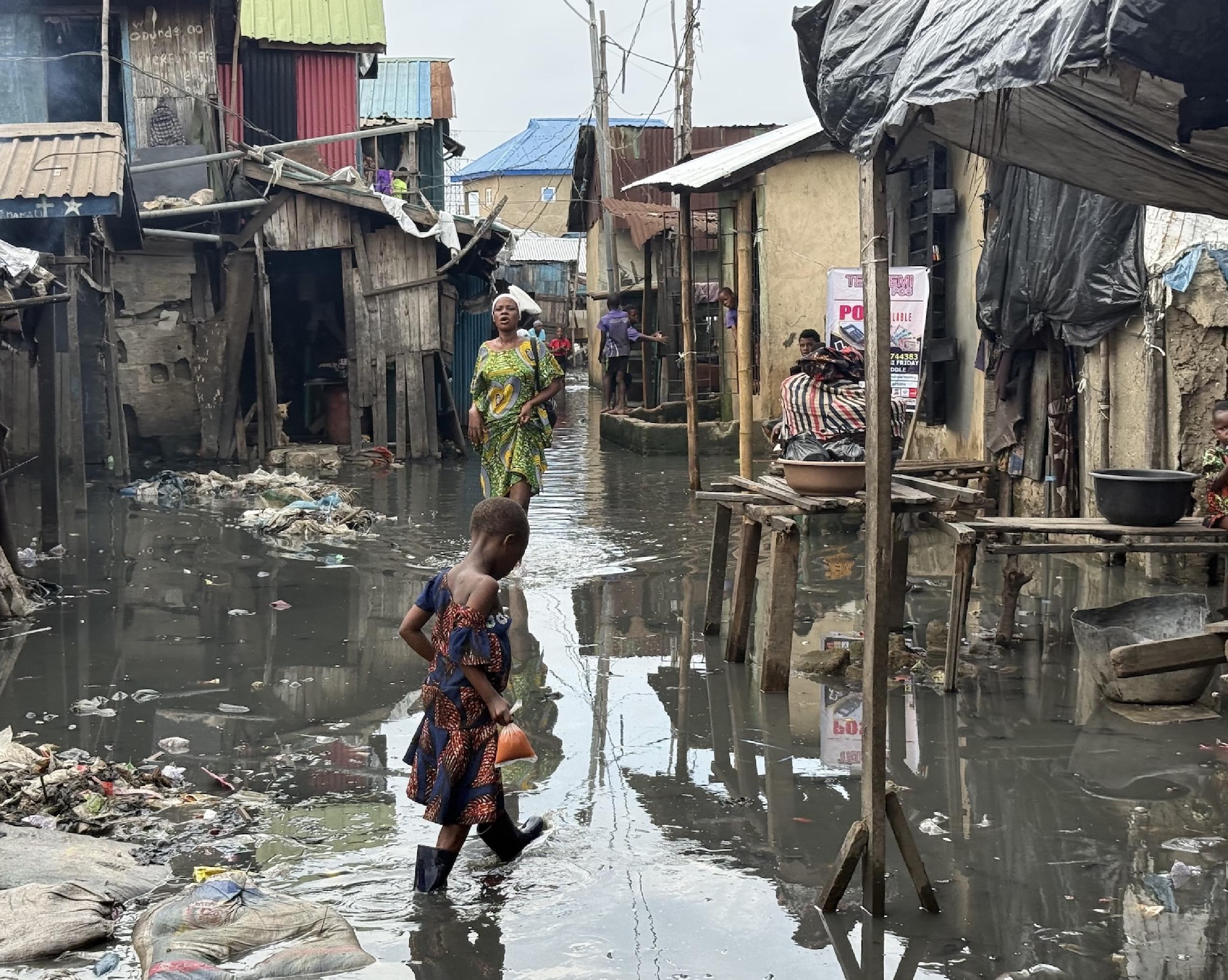
But they started with air quality because the data made it undeniable. You can debate about infrastructure priorities. You can argue about limited resources. But when you have clear evidence that children are breathing toxic air every day, and when you can see the health impacts written on every child’s face, the conversation changes.
I founded AirGradient not because I love sensors and data, I founded it to make a difference. From our early days in Northern Thailand working with communities heavily affected by the so-called burning season, to the slums of Lagos. The problems are similar, the solutions are there. What we need is to scale up these solutions massively. Every child, everywhere deserves clean air. This is the challenge we need to tackle, and we need to work together as a global community. For me at AirGradient this is on top of the agenda. Stay tuned for more.
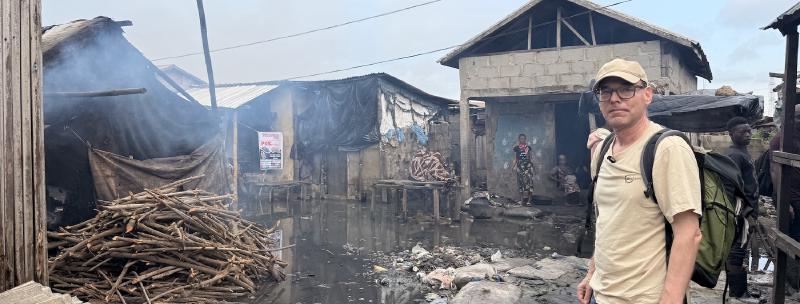
If you’re working on air quality projects in underserved communities, we want to support you. Reach out to us about our community monitoring program. Because every community deserves to know what they’re breathing.
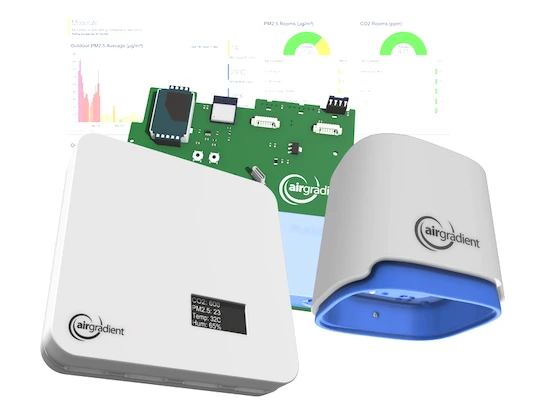
We design professional, accurate and long-lasting air quality monitors that are open-source and open-hardware so that you have full control on how you want to use the monitor.
Learn MoreCurious about upcoming webinars, company updates, and the latest air quality trends? Sign up for our weekly newsletter and get the inside scoop delivered straight to your inbox.
Join our Newsletter